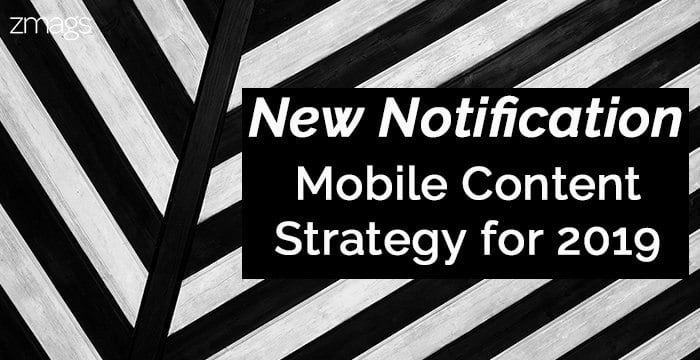New Notification: Mobile Content Strategy For 2019


Jessica is an integrated marketing leader specializing in strategic B2B and B2C enterprise solutions.
By the end of 2017, it was suspected that mobile would account for 24.4 percent of overall eCommerce revenues. Now in 2019, the number of mobile-commerce transactions will overtake e-commerce transactions globally by 2019, according to a forecast by 451 Research provided to Marketing Dive. There is now an increased demand for your content to translate to a mobile screen in order to gain more conversions. 27 percent of consumers will reportedly leave a site if it is not mobile-optimized.
Mobile content strategy is no longer an option for retailers; it is a demand. The mobile user is keenly different than a desktop user. They need to get their content as quickly and easily as possible, with clear and concise descriptions and simple navigation. Coupled with an infamous attention span of only eight seconds, and a much smaller, more compact screen to operate on, retailers are faced with a significant challenge: how can brands deliver a rich and full customer experience on a mobile device? Here are some tips to help you enhance your mobile content strategy.
Social Shopping
While social commerce has been slow to find its footing with online sales, social media selling is becoming the “go-to” for savvy digital marketers. "Stories have redefined the way brands communicate on Instagram, and creative marketers are now learning to use this format to address each stage of the customer journey, from awareness to direct purchase," said Talkwalker CEO, Todd Grossman. "We'll see even more investments in this channel in 2019."
Influencer Importance
Influencer marketing will also change how consumers shop on mobile devices. The market size for influencers will exceed $8 billion in 2020, according to Influencer DB's State of The Industry Report. For a while, influencers were thought to be a marketing technique when one has left over spending in a budget, but now, this strategy has taken over the entire retail industry.
Personalized content is always impactful – it’s one of the best ways to establish that customer-brand relationship – but especially when delivered on a mobile device. With influencers representing and offering honest reviews about products, customers are able to gather more information to help aid their shopping during the buyer’s journey. It gives shoppers a reason to buy, even if they’re on the go.
Make imagery clickable and shoppable
Shoppable images make purchases intuitive and streamlined. When a customer is using a mobile device, they’re navigating a small visual space with one hand, often just a single finger. Your layout should accommodate this with large graphics that are clickable and easy to engage with. Engagement can be a tricky metric to hit on mobile devices, but rich and clickable visuals can help get you there.
Hitting New Bars with Voice Tech
Smart speaker adoption is the mobile trend to look out for in 2019. By the end of 2018, ownership of smart speakers like Amazon Echo or Google Home was forecast to hit nearly half (48%) of Americans, up from 32% in August, per Adobe Analytics. Introducing smart speakers is driving the way customers are converting. The more people become comfortable with smart speakers, the faster consumers will commit to purchasing an item.
Writer for the Marketing Dive, Chris Kelly states, “One challenge as voice technology evolves will be customer acquisition because many voice assistants recommend products and brands based on a user's purchase history. But what about non-brand loyalists, or those already keen on a different brand?”
Offer a different way to convert
Mobile users are often accessing your content without any intent to buy - they could be casually scrolling through on their morning commute, or while in line for coffee. Making a purchase right then and there might be the last thing on their mind, so give them a chance to "convert" in a different way: subscribing to your email list. That way your brand can continue to engage with them, and hopefully convert them when they're ready. When designing your mobile pages, keep in mind they should be able to subscribe in as few clicks as possible.
When planning mobile experiences, responsive design is sometimes not enough; consider a mobile-first strategy for your next digital content campaign. With such high traffic volumes occurring on smartphones and tablets, it's a good investment to allow mobile design to sometimes take priority over desktop. Whatever your brand’s mobile strategy is, it is undeniable that retailers have to have one. Mobile cannot be an afterthought. In the age of instant gratification and on-the-go purchases, providing a rich customer journey across all devices is the key to a successful brand experience.